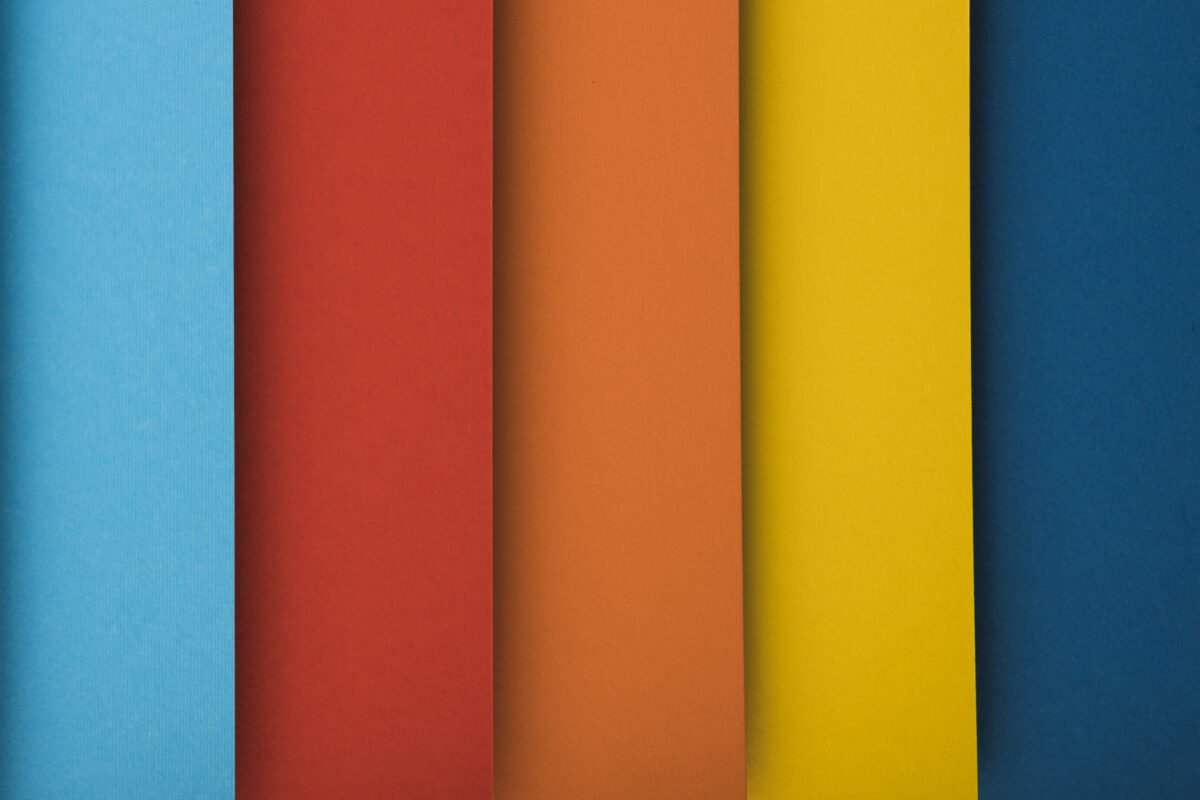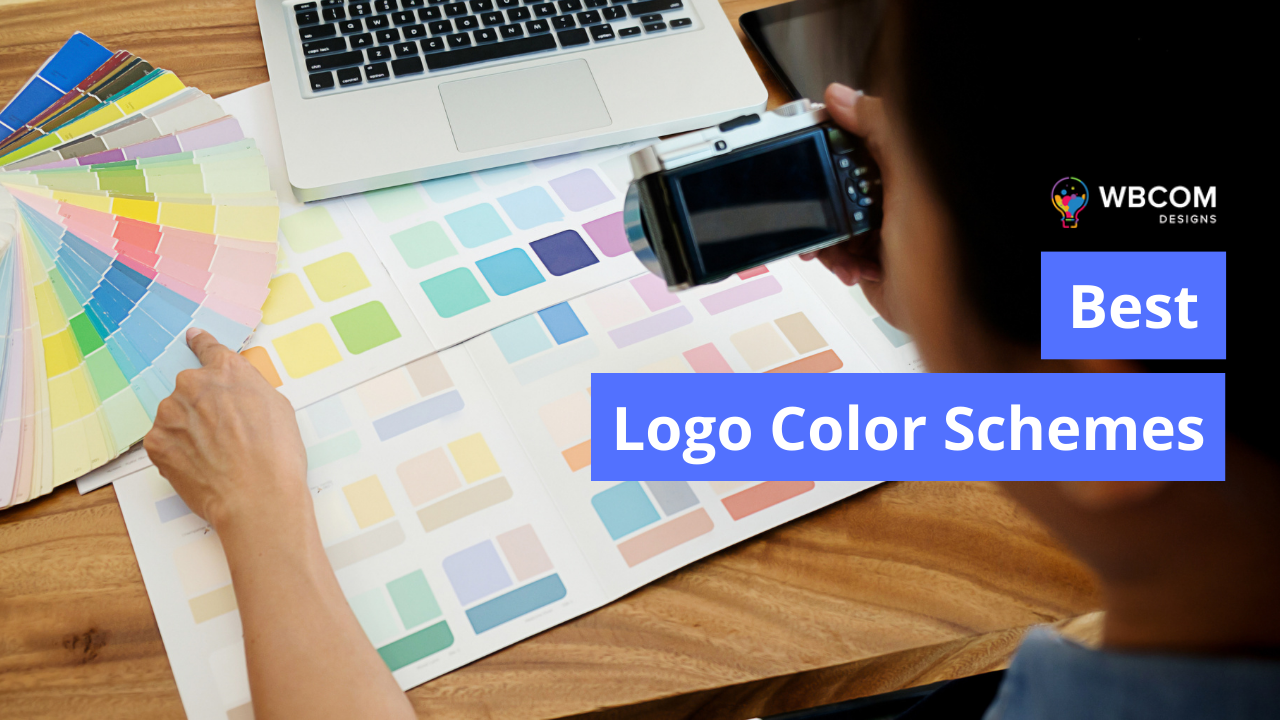Our ability to recognize and recall color schemes is ingrained into our brains. Right now, if you shut your eyes and think about three well-known businesses, the odds are high that you’ll immediately be able to see the colors used in each logo. It doesn’t matter if you use a logo maker or any other tool to make your mark; the colors you pick will always speak volumes about your brand’s identity. Are you a daring red-black or a gentle Light Blue and Crimson Pink? Using color theory in logo design can help you convey your message.
Table of Contents
ToggleWhy Are Brand Colors Important?
When creating a logo, color is an essential component. These aspects allow us to convey and emphasize our brand’s core values and strengths, set ourselves apart from the competition, and forge lasting connections with our clientele. To rephrase, they all make you feel a particular way, make you think a certain way, and maybe even act a specific way. That’s why picking the correct ones is so important.
Also Read: What Is eLearning? Everything You Need To Know About
How to combine logo colors?
While it’s possible to get away with basing a single logo color entirely on brand personality attributes, when you start blending colors, visual harmony becomes an issue. Even though your brand is likely earthy and elegant, the colors brown and purple do not complement one another. However, methods are available to assist you in using established aesthetic rules when choosing and combining colors.
Types of color combinations
Monochromatic
Can you have a color scheme with just one hue? This is the case. This is why we have monochromatic color schemes, in which one hue is chosen and then constructed with white, black, and gray to make it brighter or darker. Companies who prefer to stick with a straightforward logo color palette may find this approach most acceptable.
Complementary
Some claim that polar opposites attract, and that seems to be true! This is especially true with this pairing, as all you need are two hues on opposing sides of the color wheel. Ideal for achieving striking contrast, they may be used to enhance the visual impact of any logo.
Analogous
If you want your logo to stand out, but need help deciding on a color scheme, try using a similar palette. When placing the chosen hues on the color wheel, they are always next to one another. This indicates a close relationship between the shades, despite the lack of contrast inherent in their succession. A logo that aims for a more understated and on-point appearance would benefit significantly from this font.
Tetradic
This is the format if you’ve always dreamed of using three colors in your next logo. It works wonderfully for logos that wish to use a wide range of colors. It’s essential to imagine a triangle within your color wheel to get the ideal harmony that is typically associated with highly saturated and contrasting hues.
If you like tetradic colors, this is a great combo for you. The Tetradic approach creates a square on the color wheel, and its use of four colors results in a harmonious whole. They are typically differentiated by using contrasting color schemes.
Also Read: How To Create An Elearning Website Community
How to Choose the Right Colors for Your Logo Scheme?
Determine the character of your brand. Remember the emotions you want customers to have when they see your brand colors. Instinctively, as customers, we gravitate toward businesses whose values align with our own, so it is essential to consider the tone you wish to set and select colors that complement this description.
Pick a dominant hue to use. It would help if you settled on a primary shade that will serve as the visual hallmark of your business.
Choose a color palette for your logo where the hues are complementary to one another. After settling on a primary hue, you should establish how many shades your company will use. The average is between two and three. There are no hard and fast guidelines for logo design; examples range from monochrome to multicolor (and beyond) logos.
When designing a logo, it’s crucial to consider your brand’s qualities that will appeal to your target audience. Customers make purchases that reflect who they are, either consciously or unconsciously. Consumers are aided in their ability to classify goods and services, pick the ones that are right for them, and settle on purchases by comparing available options, thanks to the color. If you already have an idea of what you want your brand to stand for, you can use that information to guide your choice of colors from the palette up top.
Also Read: 10 Benefits of eLearning You Should Know
Which logo color schemes are right for your business?
Single Color Schemes

Red logos
Red has been associated with strength and courage for a long time; it is not a hue to be used lightly. The logo, with red as its primary hue, provides a sense of vitality and enthusiasm. Depending on the context and the message being sent, red can be seen as provocative, stimulating, or even hazardous; exercise caution when employing this hue.
Blue logos
The color blue has come to signify dependability and maturity. If you want your brand to be considered seriously, you should use it. Remember that blue, the old king of colors, is used in over half of all logos. Blue has a calming effect (think of the peace of a lake), so if you choose to utilize blue for your business, you’ll need to find a method to stand out.
Yellow logos
A yellow logo conveys an approachable, sunny, and welcoming vibe. Using yellow for your brand’s identity will give it an inexpensive, young vibe that will bring people joy. However, if you want your company to be viewed as sophisticated and high-end, you should rethink using yellow.
Green logos
While green’s adaptability is unparalleled, studies reveal that it isn’t connected to many brand personality characteristics. However, the color green does have powerful cultural implications. Eco-friendly, vegan, and natural health firms typically sport green logos because of the color’s association with nature. While this is true, the color green may be used for any commercial venture.
Purple logos
The purple, which has long been linked to aristocracy, has come to stand for affluence and sophistication. This deep hue is as regal as it is mysterious, as opulent as it is holy. When purple is used in pastel form, it’s frequently interpreted as more nostalgic and emotional. Designers often pair purple and gold in logos to convey a sense of pomp and ceremony.
Black logos
Contrary to orange and purple, black does not qualify as a color. These hues are distinguishable to the human eye because they correspond to distinct wavelengths of visible light. On the other side, darkness is what we mean when we say “black.”
Also Read: 5 Simple Ways To Boost SEO On Your WordPress Website
Multi-Color Schemes

Black-and-white logos
White contains all the hues in the visible light spectrum, while black represents the absence of light and, by extension, color, making them an unlikely pair. Together, they make for an impressive picture that may be both minimal and sophisticated, depending on your brand’s aesthetic. Individually, they stand at different extremes of the emotional spectrum regarding the world of color. All black logos might appear high-class, dramatic, and even a bit mysterious. White logos are often linked with modernity, simplicity, and freshness.
Yellow and black
The vibrant yellow utilized here is full of life and joy, much like the monkey’s face in the logo. This dark gray is a favorite in the club scene because of its mysterious allure. The combination of black and yellow is striking.
Purple and Yellow
In search of a wise logo? Combining a deep purple with a sunny yellow is a great way to get people in a creative mood. Popular in the hospitality and academic sectors, this color scheme is a classic example of a complimentary logo.
Green and blue
Usually, blue and green connote calm, yet this electric blue and lime green scream vitality and vigor. The fashion, media, and entertainment sectors may all benefit from a bold color scheme.
Black and orange
The logo’s combination of black and orange is bold and approachable. The orange adds hope, while the black acts as a sobering counterpoint. Consider using this color scheme for your logo if you’re in the entertainment or music business.
Red and black
The logo’s dominant and energizing color scheme is both bold and unexpectedly welcoming. The striking red accents the sleek black of the corporate name, which acts as a focal point; in the language of color psychology, red stands for ardor, danger, and mystery. It may be used to create tension or tension and excitement when contrasted with an intense hue like black.
White and blue
This trusting and soothing color scheme of sky blue and white will win over a broad audience. Using these elements in a logo design assures its adaptability to various fields, from healthcare to technology. Remember that white is a color that may be utilized to your advantage in the design process by emphasizing negative space or highlighting focal points.
Conclusion
Remember that the colors you use in your logo design convey a specific meaning to your audience. This meaning should represent your brand while striking a chord with your intended consumers. It’s essential to give some thought to the personality you want your brand to convey to consumers and the role that color may play in doing so. Also, think about what other companies in your industry are doing.
Always remember that the most fantastic logo color combinations must be handled on time. Expecting to find the perfect color scheme on the first try is impractical. Most designers, even those with years of expertise, spend several days, if not weeks, settling on a color scheme for their projects. Spending extra time on the color scheme will yield better results.
Logo color schemes: FAQ
How many hues should I use for my logo?
Two or three colors are recommended for a well-balanced logo. But it’s your call; all you need is a brand guideline.
Which Colors Work Best for Logos?
How you want to say something is what matters. Some logo color combinations are more appealing than others; however, any two colors can be used together. For branding, for instance, red works nicely with black, white, and even yellow.
What are the colors that catch peoples’ eyes?
Because of their high visibility and inherent warmth, the human eye quickly picks up on yellow and red colors.
Is there a specific color scheme that should be avoided while designing a logo?
First, remember that there are no hard and fast guidelines; in reality, any two colors might look great together. Nonetheless, the best combination can only be determined after considering the intended message and the specifics of the enterprise. Use the color wheel as a starting point for some inspiring color combos.
What are 7 Different Logo Color Palettes?
Here’s a rundown: Triadic, tetradic, monochromatic, square, split complementary, and analogous.
Is There a Preferable Shade of Color for a Company’s Logo?
As far as branding goes, blue is king. The prevalence of this main hue among the Fortune 500 is indicative of this fact.
Interesting Reads:
Subdomain vs Subdirectory: What to Choose?








